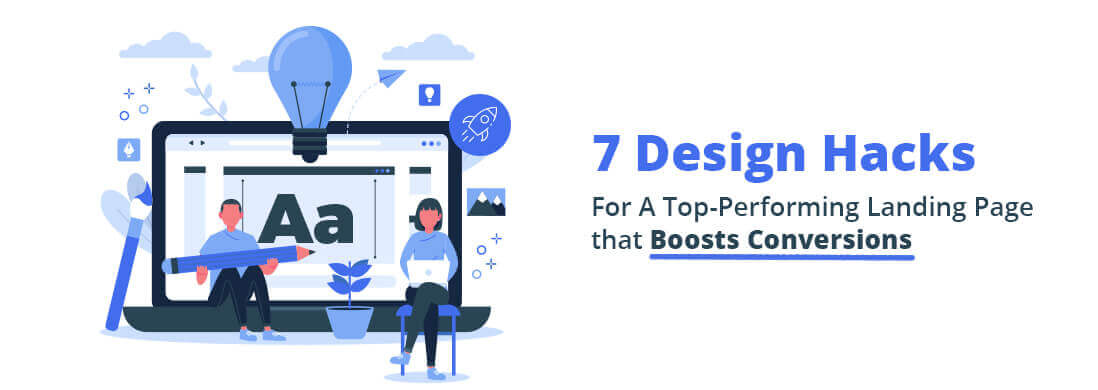In the digital age, your website is often the first point of contact between your business and potential customers. It’s your online storefront, a reflection of your brand and a powerful tool for converting visitors into customers or leads. To achieve this, your website’s design plays a pivotal role. In this article, we’ll explore a set of web design hacks that can lead to a massive boost in conversions and more sales online, helping you turn more visitors into satisfied customers.
Table of Contents
1. Streamline the User Experience (UX)
First and foremost, prioritise a seamless user experience. Visitors should find your website easy to navigate, with intuitive menus, clear headings and straightforward paths to the information they seek. Here’s how to do it:
– Responsive Design: Ensure your website is fully responsive, adapting to various screen sizes and devices, from smartphones to desktop computers.
– Intuitive Navigation: Use clear and concise navigation menus, and consider incorporating a search bar for quick access to specific content.
– Loading Speed: Optimise your website’s loading speed by compressing images, minifying code and using content delivery networks (CDNs). Slow-loading pages can lead to high bounce rates.
2. Implement a Compelling Call to Action (CTA)
A well-crafted CTA is the driving force behind conversions. It should be prominently displayed and motivate visitors to take action. Key considerations include:
– Clarity: Make your CTA text concise and straightforward. Use action-oriented language like “Get Started,” “Sign Up,” or “Buy Now.”
– Contrasting Colours: Design your CTA button with a colour that contrasts with your website’s background, making it stand out.
– Strategic Placement: Position your CTA prominently, both above the fold and at the end of relevant content.
3. Utilise Visual Hierarchy
Visual hierarchy guides visitors’ attention to the most critical elements on your website. By skilfully arranging elements, you can lead users towards conversion-focused content:
– Headings and Subheadings: Use headings and subheadings to break up content and convey hierarchy. Larger fonts and bold styles can make them stand out.
– Whitespace: Utilise whitespace to create separation between elements and help users focus on essential content.
– Colour and Contrast: Use colour and contrast to draw attention to specific elements, such as CTAs or product images.
4. Leverage Social Proof
People tend to trust the opinions and experiences of others. Incorporating social proof into your web design can build credibility and trust:
– Customer Reviews and Testimonials: Display genuine customer reviews and testimonials to showcase positive experiences with your products or services.
– Trust Badges: Show any industry certifications, security badges or awards your business has received to reinforce trust.
5. Optimise for Mobile
With an increasing number of users accessing websites on mobile devices, mobile optimisation is no longer optional. Ensure that your website’s design is mobile-friendly:
– Responsive Design: Again, responsive design is crucial to provide a seamless experience across devices.
– Mobile-First Approach: Consider designing your website with a mobile-first approach, prioritising mobile users in your layout and content decisions.
– Touch-Friendly Elements: Ensure buttons and links are large enough for easy tapping, and avoid pop-ups that obstruct the mobile experience.
6. A/B Testing
A/B testing, also known as split testing, involves comparing two versions of a webpage to determine which performs better in terms of conversions. This iterative process can help you fine-tune your web design for optimal results:
– Testing Variables: You can test various elements, including headlines, images, CTA buttons, form fields and even entire page layouts.
– Data-Driven Decisions: Use data and analytics to make informed decisions based on what resonates most with your audience.
7. Implement Trust Signals
Trust is a significant factor in online conversions. Incorporate trust signals throughout your website to reassure visitors:
– Contact Information: Provide clear contact information, including an email address, phone number and physical address, to demonstrate your accessibility.
– Privacy Policy: Display a privacy policy to inform visitors about how you handle their data.
– Secure Connection: Use HTTPS to secure your website and display the padlock symbol in the browser’s address bar.
8. Simplify Forms
Forms are often used to capture leads or customer information. Simplify your forms to reduce friction and encourage more conversions:
– Minimal Fields: Ask for only essential information. Lengthy forms can be daunting and lead to abandonment.
– Progress Indicators: If a form has multiple steps, use progress indicators to show users how far they’ve progressed.
9. Aesthetically Pleasing Design
Aesthetics matter; an attractive and visually pleasing design can significantly impact user engagement and conversion rates:
– Colour Psychology: Consider the psychological effects of colours in your design. Different colours can evoke different emotions and behaviours.
– Consistent Branding: Maintain a consistent colour scheme, typography and visual elements throughout your website to reinforce your brand identity.
– High-Quality Imagery: Use high-resolution images and graphics to enhance the overall visual appeal of your website.
10. Monitor and Analyse
Finally, continuously monitor and analyse your website’s performance using tools like Google Analytics. Pay attention to metrics such as bounce rates, click-through rates and conversion rates. Regular analysis will help you identify areas for improvement and refine your web design for better conversions.
Conclusion
Web design is a dynamic field, and staying ahead of the curve can lead to substantial conversion boosts. By focusing on user experience, visual hierarchy, compelling CTAs and elements like social proof and trust signals, you can create a website that not only attracts visitors but converts them into loyal customers. Remember that web design is an ongoing process; keep testing, iterating and adapting to the changing needs and preferences of your audience.












